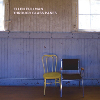 Fullman and her Long String Instrument have been quite active with collaborations, commissions, and residencies over the last few years, but this album is her debut full-length as a solo artist.  On one hand, that is quite remarkable, as she began working with her self-invented instrument of choice just about three decades ago.  On the other hand, the wait makes perfect sense, as the instrument's limited range and versatility make it a very difficult foundation to base an entire album upon.
Fullman and her Long String Instrument have been quite active with collaborations, commissions, and residencies over the last few years, but this album is her debut full-length as a solo artist.  On one hand, that is quite remarkable, as she began working with her self-invented instrument of choice just about three decades ago.  On the other hand, the wait makes perfect sense, as the instrument's limited range and versatility make it a very difficult foundation to base an entire album upon.
I'm sure that Ellen Fullman is not the first person to string wires across the entire length of a room (Alvin Lucier springs to mind), but her Long String Instrument is definitely unique in its complexity and scale: it features dozens of wires over 18 feet in length tuned in Just Intonation, an uncommon ratio-based tuning most famously used in LaMonte Young's epic "The Well-Tuned Piano."  Fullman's instrument also requires its own notation to "choreograph" its unusual playing technique (the performer walks slowly back and forth dragging their resin-covered fingers along the strings).  The overall effect is akin to a slow-motion raga being performed by a bunch of buzzing and humming power lines.  It's admittedly very impressive and unusual (probably much more so when experienced live, as the resonance of the performance space itself is a necessary part of the instrument), but it is also a very, very specific niche to be constrained to.
Wisely, Fullman only includes one completely pure Long String Instrument piece, the metallic and dissonant drone of "Event Locations No.2," which focuses on the beating created by uncomfortable harmonies.  The album's title piece also relies exclusively on the instrument, but Ellen percussively employs a "box bow" to achieve a strangely clipped autoharp effect.  My favorite pieces, however, are the two that involve other musicians, both of which were originally composed for Kronos Quartet and are very loosely based on Geeshie Wiley's timeless and singularly bleak "Last Kind Words Blues."  Normally, the idea of someone appropriating a simple, gut-level American Primitive classic for elaborate and expensive contemporary sound art would anger me, but Ellen's transfiguration is imaginative and unrecognizable enough to escape my wrath.
The sole significant difference between the two Wiley-based pieces ("Flowers" and "Never Gets Out of Me") is that one features mournful violins (and an interloping flock of sparrows) and one features a mournful cello.  Ellen went about composing the violin and cello parts quite similarly, taking selected segments of Geeshie's original melody and reconstructing them to mimic North Indian vocal music.  That approach is certainly fairly novel and effective, but a lot of the power stems from the simple fact that Fullman's heavily texture- and harmony-based music feels more complete with the addition of melody (and some new textures don't hurt either).  The trade-off, unfortunately, is that my ear is then drawn mostly to the melodic foreground.  That, lamentably, is Though Glass Panes' tragic flaw: the Long String Instrument is probably best used as an accompaniment rather than as a focal point (on album, anyway).  Ellen's artistry relies far too heavily on process, performance, and scale to reach its full potential on a recording.  Still, I was very much impressed by Through Glass Panes on a purely cerebral level: during its best moments, it certainly felt like Fullman was on the verge of warping both time and music into something uniquely her own.
Samples:
 
Read More

